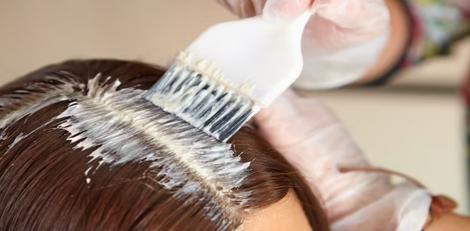Do you have the habit of using hair dye frequently? You might have to think twice before using it!!
For cosmetic sake, hair dye is widely used across the globe is well known to us. Concerns have been raised over the years regarding whether frequent use of hair dyes could result in cancer.
There are some chemicals present in the hair dyes and these chemicals have been labelled as carcinogenic or cancer causing by IARC or International Agency for Cancer Research. It is noteworthy that this classification was based on the evidence suggesting an increase in the risk of cancer among those who are frequently exposed to hair dyes like barbers, salon workers, hairdressers etc.
Truth is that scientific studies that were carried out have examined whether the use of hair dye has been related with certain types of cancer like bladder cancer, blood cancer and breast cancer etc. Small and consistent rise in the risk of bladder cancer is witnessed especially in those whose occupation involved hair due usage. Point is that the results are less clear especially for those persons who use hair dye occasionally in their homes. There are some studies that have shown a relation between use of hair dye and cancer risk. Other studies that focussed on modern products have not shown any link.
According to a famous doctor belonging to the department of uro-oncology from Hyderabad based Asian institute for Nephrology & neurology it was clear that potential risk of cancer were believed to arise from certain chemicals that were used in the hair dye formulations.
It is worthy to note that hairs pH would get increased by ammonia and would open the outer layer to allow the penetration of the dye. Hydrogen peroxide used in the hair dyes would act as a bleaching and oxidising agent and would break down the natural pigment. By this, dye would take effect.
In many permanent hair dyes, PPD or paraphenylenediamine is used for creating long lasting colour. Though these ingredients could be effective, they would also lad to few side effects in us.
Our scalp would get irritated by ammonia present in the hair dyes, hair follicle would get damaged due to over usage of hydrogen peroxide. In some persons, PPD could lead to allergic reactions also.
After getting absorbed by the scalp, these chemicals would enter the bloodstream and get filtered by the kidneys. In the end, the chemicals would accumulate in our bladder. As the inner lining of the urinary bladder gets exposed to these substances, there are chances of getting cancer over time.
It must be noted that hair dyes that were used before the 1980s contained certain chemicals that posed a greater threat of cancncer in us. Most modern hair dyes are safer to use as the formulation has been updated. Point to be noted is that for those who dye their hair at home occasionally the evidence now does not show a significant cancer risk. Persons who have been exposed to hair dyes professionally for many years might have a slightly more risk of getting bladder cancer.
Finally, occasional use of modern hair dye is considered as safe. Those persons who are occupationally exposed to hair dye must be cautious and must wear hand gloves and opt for safer product alternatives etc.


